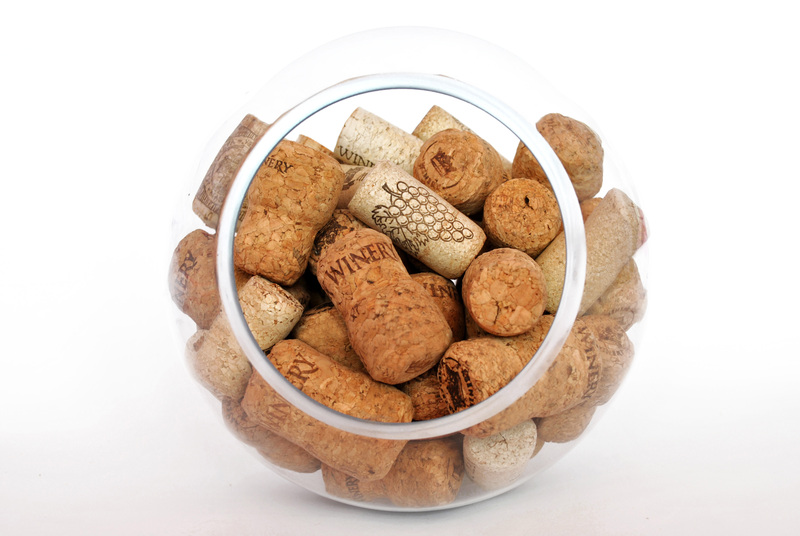Stay Safe by Avoiding Problematic Plastics: A Comprehensive Guide
Plastics have become an integral part of modern life. From water bottles to food packaging, household items, toys, and even personal care products, plastics are everywhere. However, not all plastics are created equal. Some varieties can threaten your health and the environment. In this in-depth article, we will explore how to stay safe by avoiding problematic plastics and provide actionable tips to minimize your exposure. Whether you are concerned about chemicals leaching into your food or the ecological impact of disposables, this guide is your go-to resource.

Understanding Plastics: The Good, the Bad, and the Ugly
Plastics are categorized based on their chemical composition. Each type of plastic has specific properties, usage, safety levels, and environmental impacts. To avoid hazardous plastics, it's crucial to understand the classification system and identify which plastics are considered problematic.
The Resin Identification Code: What Do Those Numbers Mean?
Most plastic products display a resin identification code -- the little triangle with a number (1 through 7) inside. Here's what those codes mean and their levels of safety:
- 1: PET or PETE (Polyethylene Terephthalate) - Commonly used in water and soda bottles. Considered safe for single use, but may leach harmful chemicals if reused or exposed to heat.
- 2: HDPE (High-Density Polyethylene) - Used in milk jugs and detergent bottles. Generally regarded as safe and recyclable.
- 3: PVC (Polyvinyl Chloride) - Found in pipes, shower curtains, and some food wraps. Known to release harmful chemicals including phthalates and vinyl chloride. Best avoided.
- 4: LDPE (Low-Density Polyethylene) - Appears in bread bags, some food wraps, and squeezable bottles. Considered relatively safe.
- 5: PP (Polypropylene) - Used in yogurt containers, straws, butter tubs. Often deemed safe.
- 6: PS (Polystyrene) - Common in takeout containers and Styrofoam. Can leach styrene, a possible carcinogen. Avoid whenever possible.
- 7: Other - A catch-all for other plastics, including polycarbonate. May include BPA, a known endocrine disruptor. Use with caution, or better yet, avoid.
Why Are Some Plastics Problematic?
The dangers of certain plastics stem from the chemicals they contain. These compounds can leach out and enter your body via food, drinks, skin contact, or air. Over time, exposure can increase the risk of various health issues.
Key Chemicals in Problematic Plastics
- BPA (Bisphenol A): Found in polycarbonate plastics (category 7), BPA is an endocrine disruptor linked to insulin resistance, reproductive harm, and increased cancer risk.
- Phthalates: Present in PVC (category 3), these chemicals soften plastic but can interfere with hormone function and have been connected to developmental issues in children.
- Styrene: Leached from polystyrene (category 6), styrene is a possible human carcinogen and may affect the nervous system.
- Vinyl chloride: Also in PVC, it's a known human carcinogen.
By staying away from plastics containing these substances, you'll help protect your health and the environment.
How to Recognize and Avoid Hazardous Plastics
Here are simple actionable strategies to minimize your exposure to risky plastics in everyday life:
1. Check for Resin Codes
- Read labels or look for the triangle symbol with a number.
- Avoid plastics marked 3, 6, and 7 whenever possible.
- Prefer items labeled 2, 4, and 5 for food and drink use.
2. Minimize Single-Use and Disposable Plastics
- Single-use items like straws, cutlery, and take-out containers are more likely to leach chemicals, especially if hot food or liquids are involved.
- Switch to reusable options made from glass, stainless steel, silicone, or bamboo.
3. Pay Attention to Temperature
- Never microwave food in plastic containers, especially those not labeled as microwave-safe. Heat accelerates chemical leaching.
- Avoid leaving water bottles in hot cars or in direct sunlight.
4. Select Safer Alternatives Whenever Possible
- Choose glass or stainless steel for food storage and water bottles.
- Opt for silicone lids and bags for a reusable, non-toxic option.
- Pick uncoated paper or bamboo products instead of plastic-lined disposables.
5. Rethink Food Packaging
- Buy fresh produce instead of pre-cut or pre-packaged fruits and vegetables.
- Bring your own produce bags and containers to the store.
- Choose bulk options when available to reduce packaging waste and exposure.
The Environmental Impact of Problematic Plastics
Staying safe by avoiding problematic plastics benefits not only your health but also the planet. Here's why:
- Non-biodegradable: Most plastics take hundreds of years to break down and persist in landfills and oceans.
- Toxic pollutants: As plastics degrade, they release harmful chemicals into soil and water, affecting wildlife and, ultimately, humans.
- Wildlife impact: Animals often mistake plastics for food, leading to injury or death, and microplastics accumulate in the food chain.
By cutting back on troubling plastics, you actively contribute to a cleaner, healthier, and more sustainable world.
Common Products That May Contain Dangerous Plastics
Awareness is your first line of defense. Here's a list of typical household items where problematic plastics lurk:
- Plastic food storage and water bottles - Especially if old, discolored, or not labeled "BPA-free."
- Microwave meal containers
- Plastic kitchen utensils
- Toys and baby products - Always check labels for BPA, phthalates, and PVC.
- Personal care products - Shampoo, body wash, and toothpaste tubes often use #3 (PVC) or #7 plastics.
- Plastic wrap and takeout containers
- Disposable cups and plates - Often made from polystyrene or lined with problematic coatings.
Staying Safe from Plastic Hazards: Do's and Don'ts
Smart Dos:
- Do replace old or scratched plastic containers, which are more likely to leach chemicals.
- Do search for products labeled "BPA-free" and "phthalate-free."
- Do hand-wash plastic items to avoid heat damage.
- Do choose natural material alternatives whenever practical.
- Do spread awareness by discussing plastic safety with friends and family.
Key Don'ts:
- Don't heat food or drinks in plastic containers, unless specifically designated microwave-safe.
- Don't reuse single-use water bottles.
- Don't buy children's toys or baby bottles not labeled as free of BPA and phthalates.
- Don't ignore recycling rules -- reject plastics not accepted by your local recycling program.
Frequently Asked Questions About Avoiding Problematic Plastics
Are all plastics equally dangerous?
No. Some plastics, like HDPE and PP, are widely considered safer for food and drink. Others, including PVC, polystyrene, and certain polycarbonates (often labeled #3, #6, or #7), are best avoided.
How do I know if a plastic contains BPA?
Look for labels or certifications on the product ("BPA-free"). Avoid plastics labeled with #7 unless specifically marked as BPA-free, as BPA is commonly found in category 7 plastics.
What about "compostable" or "biodegradable" plastics?
While greener alternatives are on the rise, many "compostable" plastics only break down under industrial conditions and may still release problematic additives if not properly disposed. Always check certifications and disposal guidelines.
Is all plastic wrap hazardous?
Not all, but wraps made with PVC (#3) can leach hazardous chemicals, especially when heated. Opt for polyethylene-based wraps (#4) or, better yet, reusable beeswax wraps or silicone covers.
Can I recycle problematic plastics?
Some can be recycled, but many municipal programs do not accept PVC, polystyrene, or mixed plastics (7). Check your local guidelines and strive to reduce use rather than relying solely on recycling.

Summary: Stay Safe by Avoiding Problematic Plastics
Protecting your health and the environment by steering clear of dangerous plastics doesn't have to be overwhelming. Here's what you can do:
- Educate yourself and your household about resin codes and chemical risks.
- Switch to safer alternatives like glass, stainless steel, or silicone for everyday use.
- Avoid heating or reusing risky plastic items.
- Reduce single-use plastics and advocate for systemic change in your community.
By following these steps and avoiding problematic plastics, you take charge of your long-term wellbeing and help safeguard the planet for future generations.
Further Reading and Resources
- Environmental Working Group: Research and consumer guides for avoiding toxic chemicals.
- FDA Guidelines on Food-Contact Materials
- Plastic Safety Education
Start today by making small swaps. Every step counts as you strive to stay safe by avoiding problematic plastics in your daily life!